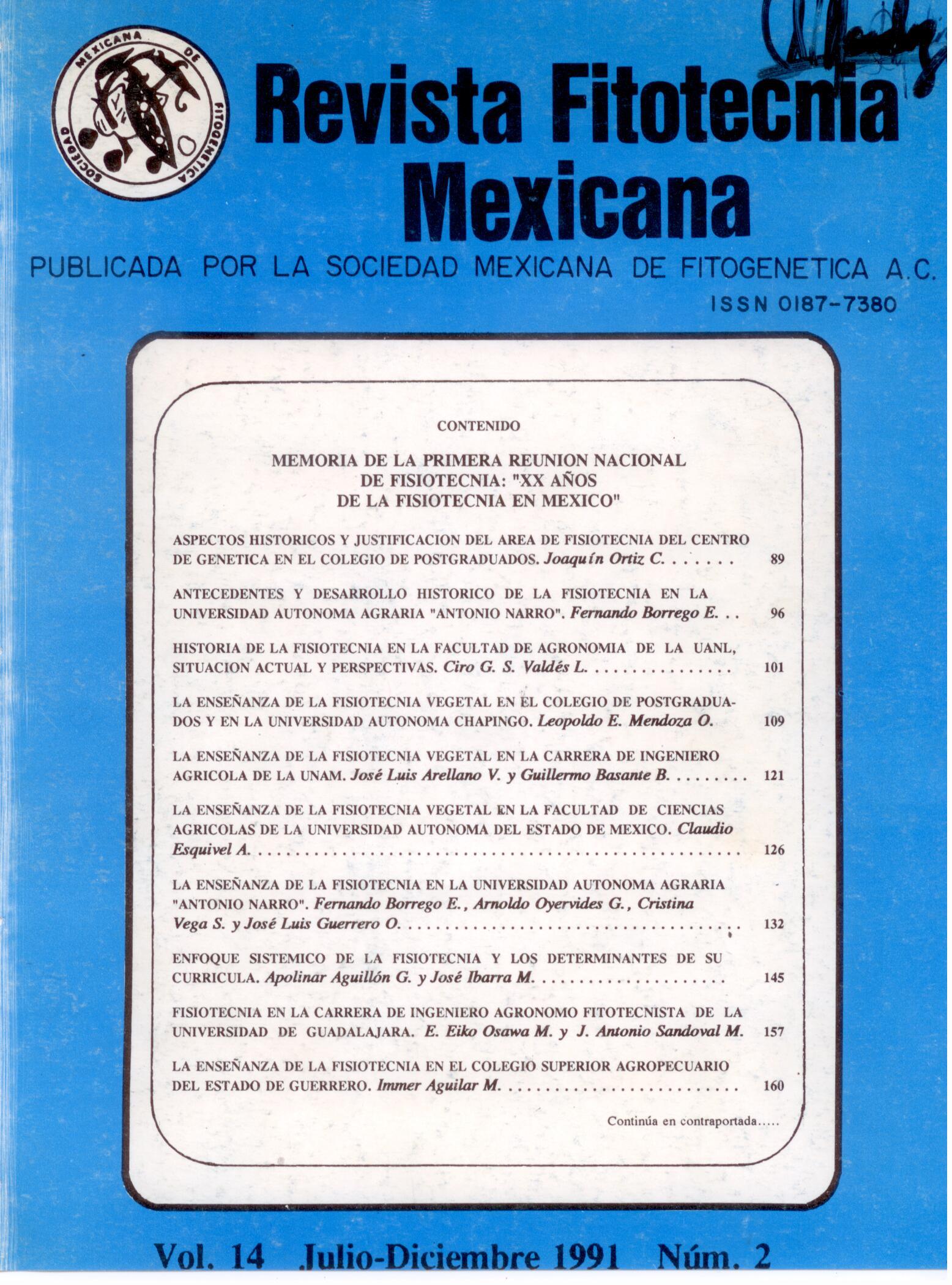HISTORICAL ASPECTS AND JUSTIFICATION OF THE PHYSIOTECHNICS AREA OF THE GENETICS CENTER AT THE POSTGRADUATE COLLEGE
Main Article Content
Abstract
Genetic improvement is one of the most important strategies to raise levels of agricultural production. The use of genocultivars (improved varieties), especially in those agroecosystems that present favorable conditions, combined with the application of energy to the agroecosystem, have generated increases in the production and productivity of the main basic food species, oilseeds, industrial, horticultural, fruit trees, etc. However, in conventional genetic improvement, much emphasis has been placed on the use of performance of anthropocentric interest as the main criterion in the selection and evaluation phases, which in part has caused the gains in economic performance of the new varieties, with respect to those previously obtained, are increasingly smaller and require greater time and effort for their obtaining (Ortiz, 1972; Molina, 1972), and that the most productive individuals tend to be more vigorous and with a greater biological cycle (Mendoza et al., 1971). When evaluating the progress obtained after nine cycles by two mass selection methods in corn (Zea mays L.), Ortíz et al. (1984) found that grain yield had indeed increased but that the total dry weight (biological yield) had also increased in parallel, so the relationship between grain yield and Total dry matter produced (harvest index) practically remained constant; That is, the efficiency in the conversion of energy to dry matter of economic importance was not improved with the selection process, and although more productive plants were obtained, they were not more efficient from this point of view. A practical consequence of this, as pointed out by González et al. (1984), is that in these inefficient materials the response to cultural practices such as planting density is very limited, which in some agroecosystems is manipulated to increase yields per unit area.

